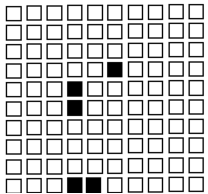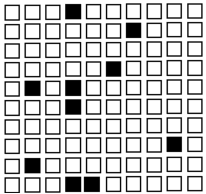What game theory says about a MAGA military
What should be made of Donald Trump’s avowed longing for senior military officers who will do his bidding without question? To answer that, we must contemplate a scenario rarely considered by civil-military theorists, let alone military officers themselves: a U.S. president who gives orders that are not obviously illegal yet which undermine democratic norms.
In game-theory terms, a president’s orders are generally viewed as either lawful or unlawful, and the military’s proper role is generally quite clear: all lawful orders should be followed; no unlawful orders should be followed. This creates a simple two-move game with four possible outcomes:
- Lawful orders → Military obeys.
- Lawful orders → Military challenges.
- Unlawful orders → Military obeys.
- Unlawful orders → Military challenges.
Even this basic frame reveals gaps in our common discussions of the subject. Scholars and practitioners generally assume that U.S. presidents issue only lawful orders and that a professional military will almost always obey orders. The only source of real anxiety concerns unpopular personnel matters where the military subtly resists political guidance. The most alarming scenario—Outcome 3, where the military obeys unlawful orders—is viewed as so extraordinarily unlikely that it is simply not debated in the American context.
Moreover, this simple frame does not account for the possibility of orders that are legal on their face yet corrosive to the rule of law. Such orders would break long-established norms, but Trump’s track record shows the world to be far more permissive of rule-bending than we have assumed.
So let us consider how the civil-military game changes when we introduce a middle position for the president to play. Let us say now that the president has three moves: white (clearly lawful and appropriate orders), gray (orders that are not clearly unlawful, but which place considerable stress on democratic norms), and black (unlawful orders). And let us further say that the military retains its two moves: white (follows orders) and black (refuses to follow orders).
Now picture the military as a grid of one hundred tiles. Each time that the president issues white orders, the tiles stay white if the military obeys, but turn black if the military challenges. Every time that the president issues either gray or black orders, the tile turns black if the military obeys, but white if the military challenges.
Let us say that 5 percent of the American armed forces are Trump loyalists who will break the law if directed by Trump do so. Picture these as five black tiles randomly placed among the 95 white tiles. If Trump only issues clearly lawful or clearly unlawful orders, we can assume that the ratio of white to black will remain consistent, with a 95-percent tendency toward obeying lawful orders and challenging unlawful orders, and things will remain as they are.
Figure 1: 5% Trump Loyalists

If, however, Trump begins to issue gray orders, the tiles will start to flip in unpredictable ways, based on how individual officers balance their feeling of obligation to follow orders against their understanding of their responsibility to democratic society. If we assume that 95 percent of officers will choose to challenge gray orders, then after a round of gray orders has been issued throughout the armed forces, the total number of black tiles will still double, since the Trump loyalists will be joined by the 5 percent of rule-followers.
Figure 2: Trump Loyalists plus Rule-Followers after one round of gray orders

Finally, let us add in the effect of Trump firing loyalists who challenge his gray orders, which we can visualize as the conversion of one tile to black per round. By firing those who consistently challenge his gray orders, he will both embolden his supporters and intimidate those who might prefer the conservative strategy of obeying orders over the riskier strategy of challenging them. We can picture this additional chilling effect as a decrease in the likelihood of challenging gray orders, so let us revise that estimate down to 90 percent after this first round. After nine rounds of gray orders, half the tiles will have turned black.
Figure 3: Trump Loyalists plus Rule-Followers after nine rounds of gray orders

In the scenario I have described, the endgame for American democracy can play out by the compounding effect of waves of anti-democratic guidance that only a small faction of officers actually follow at any one time. Notably, this accords with the political philosopher Václav Havel’s theory of the power of the powerless: concessions to corrupt power, even begrudgingly made, nevertheless contributes to the normalization of that corruption. Military officers have an aversion to challenging orders; to actively resist corrupt orders is exceptionally difficult. My estimate that 95 percent of officers would challenge gray orders is probably high.
Let us review my assumptions. I have assumed that Trump, recognizing that personal control over the DOD would give him exceptional coercive power and virtually unlimited material resources, will be tempted to corrupt the military by leading officers to break with democratic norms. And I have assumed that in doing so, Trump will use his usual strategy of trial-and-error, probing to find places where he can convince others to break norms in order to act in his interests and demonstrate loyalty.
I have also made four assumptions about the military’s reactions: Five percent of officers would follow clearly illegal orders by Trump; 95 percent of officers would resist orders that they feel are a threat to democratic norms but which they do not believe to be illegal; Trump would be willing to fire 1 percent of the officer corps for challenging his anti-democratic norms in any given round; and after an initial round of mass firings, the willingness to resist anti-democratic orders would decrease to 90 percent. Finally, I have assumed that once corrupted, officers stay corrupted. These assumptions are merely notional, and should be subjected to proper analysis.
In the coming four years, America’s officer corps may be faced with a difficult challenge: to resist the temptation to obey orders that should be challenged. It seems likely that this will come in the form of waves, with the transgressiveness increasing as larger numbers become accustomed to breaking norms. The only move for the military to play, in this scenario, is to challenge inappropriate orders—the very thing that officers are trained not to do. The military is now on the horns of a dilemma. Twisting one way imperils its tradition of obedience of elected officials. Twisting the other risks making it a willing accomplice to the end of American democracy.
Thomas Crosbie is an associate professor at the Royal Danish Defence College’s Centre for Joint Operations, Institute for Military Operations. A sociologist by training, he focuses his research on military politics, the military profession, and the conduct of war.





Comments are closed.